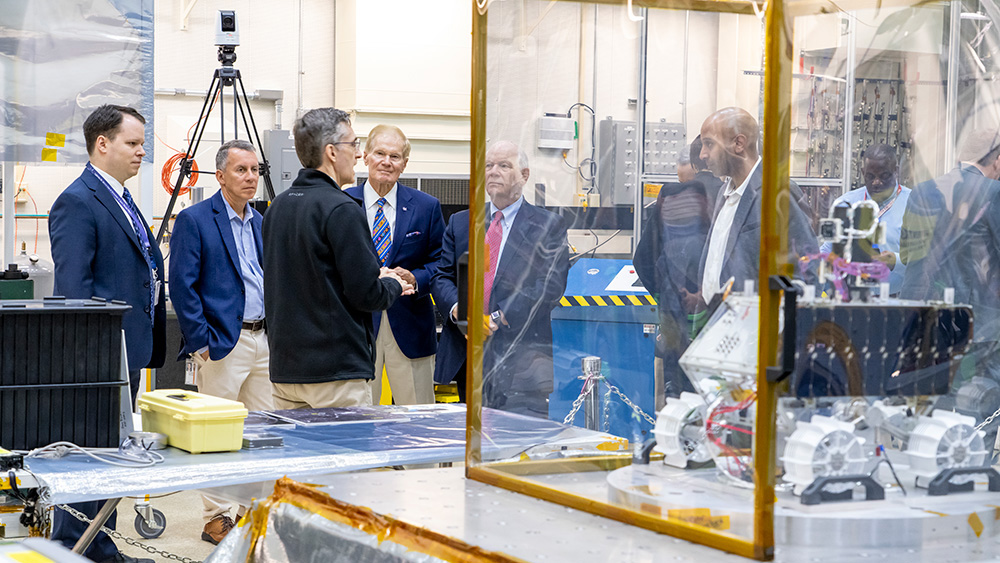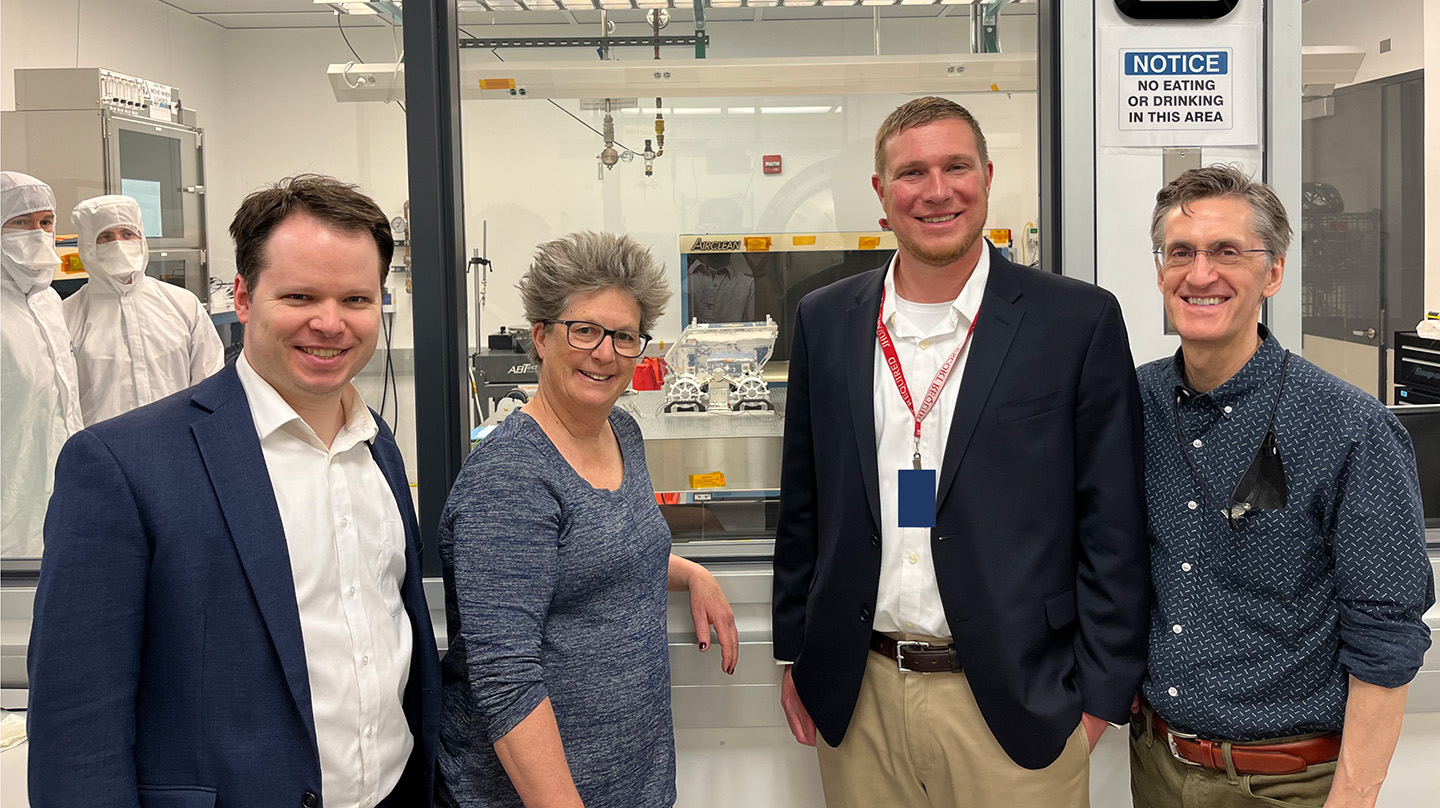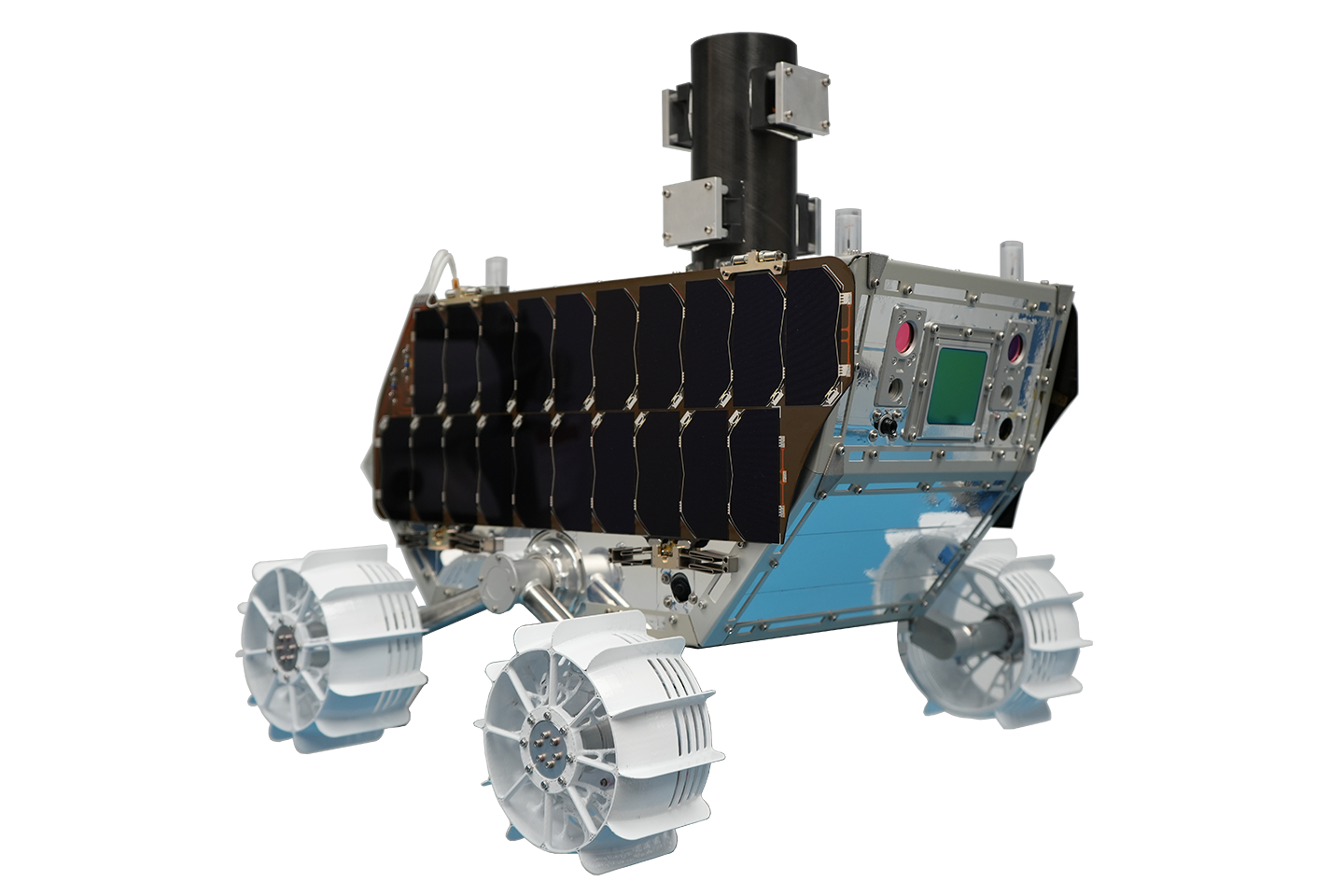Press Release
Tiny but Mighty Lunar Rover Moves One Step Closer to Launch
In 2024, a small rover is set to roam the Moon, collecting critical data to help scientists better understand characteristics of the lunar surface. The Johns Hopkins Applied Physics Laboratory (APL) in Laurel, Maryland, recently received the rover from commercial partner Lunar Outpost. The rover is a key element of NASA’s Lunar Vertex payload suite.
Lunar Vertex will explore one of the Moon’s swirls, intriguing patterns of bright and dark soil that snake across the surface and coincide with swaths of magnetized rock. Scientists believe these areas can help them answer many questions about conditions on the Moon and other airless worlds throughout the solar system.
The rover, a version of Lunar Outpost's Mobile Autonomous Prospecting Platform (MAPP) product, will carry a set of science instruments to explore the origins and magnetism of the most famous of the Moon’s swirls, Reiner Gamma. Although it is small and lightweight, the rover carries significant scientific capabilities and can drive long distances — a feature critical for its traverse across the Reiner Gamma swirl.
“Having the mobility provided by the rover is key to accomplishing the science goals of the Lunar Vertex investigation,” said David Blewett, the mission’s principal investigator at APL.


